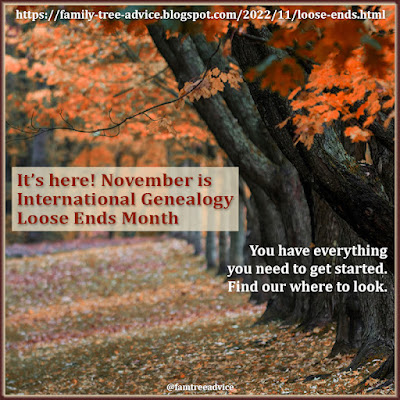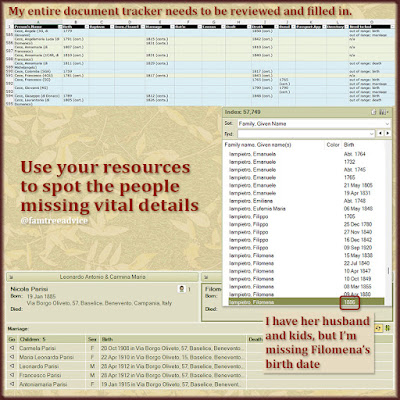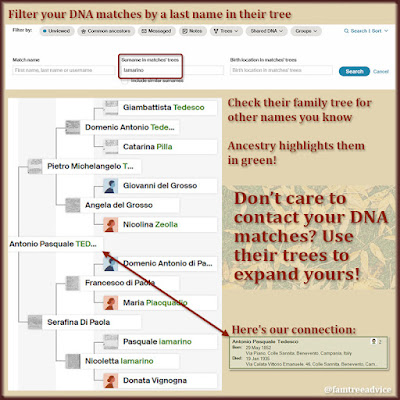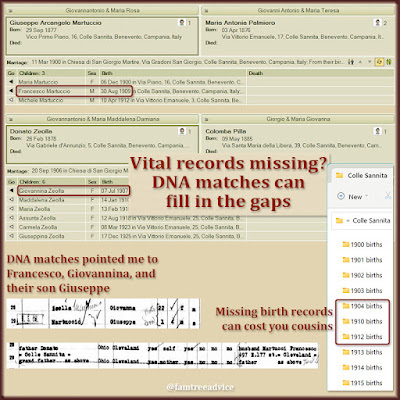Last week I declared November to be International Genealogy Loose Ends Month. (See Make November Genealogy Loose Ends Month.) But first I needed 3 days to tie up a different kind of genealogy loose end!
Once I was free to start, I had my sights set on my Ancestry.com shoebox. There were 15 screens full of saved items dating back to 2007! I started with the oldest ones and immediately realized I had some treasures there.
He's Been Waiting All This Time
One of the oldest items was a ship manifest for a 19-year-old man with my maiden name: Iamarino. He was traveling with his mother, and they came from my Grandpa Iamarino's hometown. That meant they should be in my family tree.
I launched Family Tree Maker and looked for a Giuseppe Iamarino of the right age. He needed to have a mother named Libera Paolucci. There was only one choice. What a shock it was to see his photo there in my tree! You see, several months ago my dad sent me a link to a 2020 obituary for a man in Florida with our last name. He asked me if I could figure out his relationship to us, and I did. He was my 4th cousin twice removed.
Now I know when he came to America and that his parents were here, too. He started as an obituary. Now I know his whole family.
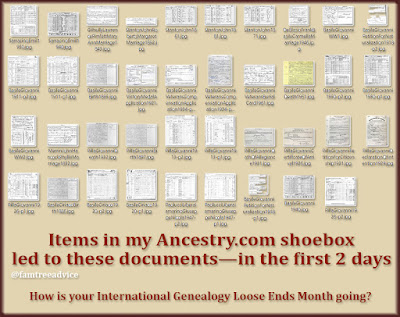 |
| Your own notes from the past may lead to a treasure trove of documents for your family tree. |
A Chance to Update Source Citations
There were a bunch of older items in my Ancestry shoebox that I'd already placed in my family tree. I decided to update the sources for those items before deleting them from my shoebox. They were so old that I'd used a very simple source citation style that I don't use anymore. I went ahead and updated each source to my new, much more specific style. (See Step-by-Step Source Citations for Your Family Tree.)
I skipped over a few older shoebox items, saving them for the end of this process. I know I can place those items in my family tree, but they need a bit more research first. For example, there's an item for a man with the last name Luciano. He isn't in my tree yet, but he was born in my other grandfather's town, so I know I can fit him in.
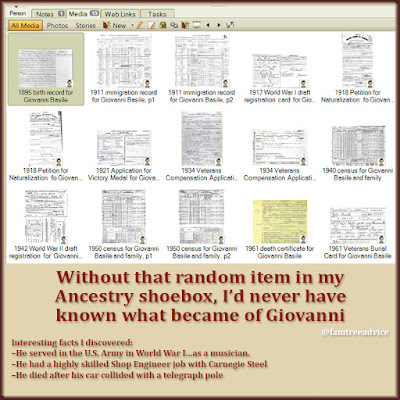 |
| Follow up on your past hunches and you may discover there was more to a cousin than you ever knew. |
Then I spent an entire day gathering U.S. documents for my 3rd cousin 3 times removed, Giovanni. He was born in Grandpa Iamarino's hometown, and I never knew he left Italy. There were a ton of documents for him, including:
- censuses
- naturalization papers
- military papers, including draft registration cards and veterans benefit applications
- a death certificate
I built his entire U.S.-born family, some of whom may lead me to connect to DNA matches. How sad it was to learn that he died from injuries sustained in a terrible car crash. And how weird that in 1961 they called it a telegraph pole, not a telephone pole, that his car crashed into.
There Was More to His Story
Another distant cousin came to America and completed the citizenship process in 1931. For some reason he went home to Italy in 1932—and died! I already had his Italian birth and death records, and since he never married, I thought that was all there was. Now I know he came to America, following his father, to earn money. Then he decided to become a citizen, and did so.
Unfortunately I'll never know what went wrong in that last year of his life. Was he badly injured on the job? Did he become ill and want to see his mother again? That one old shoebox item filled out his life in a very unexpected way.
Picking Up a Dropped Stitch
Right now I'm working on the newest items in my shoebox. I saved them recently when I didn't feel like finishing my research on that family that day. They are ancestors of my husband's 1st cousins, all from Liverpool, England. My husband told his cousins that maybe I could connect them to the Beatles or the royal family. I doubt it, but I'll give it a try.
I'll need about another week to empty out my Ancestry shoebox. What's next? I may pull out my old notebook of ship manifest entries for people I haven't yet placed in my family tree. The notebook is from my earliest days of genealogy. Back then I wrote down the facts for anyone with a last name from my close family. Now I can figure out who everyone is.
Let me know how your International Genealogy Loose Ends Month is going. What surprises did you find? What will you tackle next?
